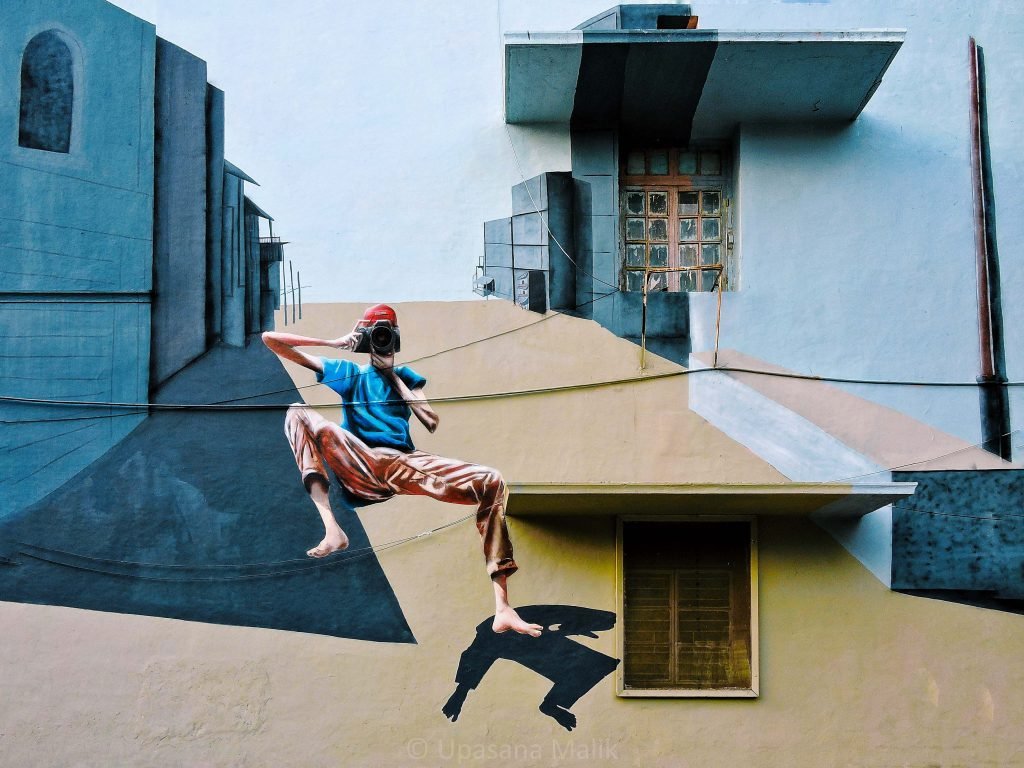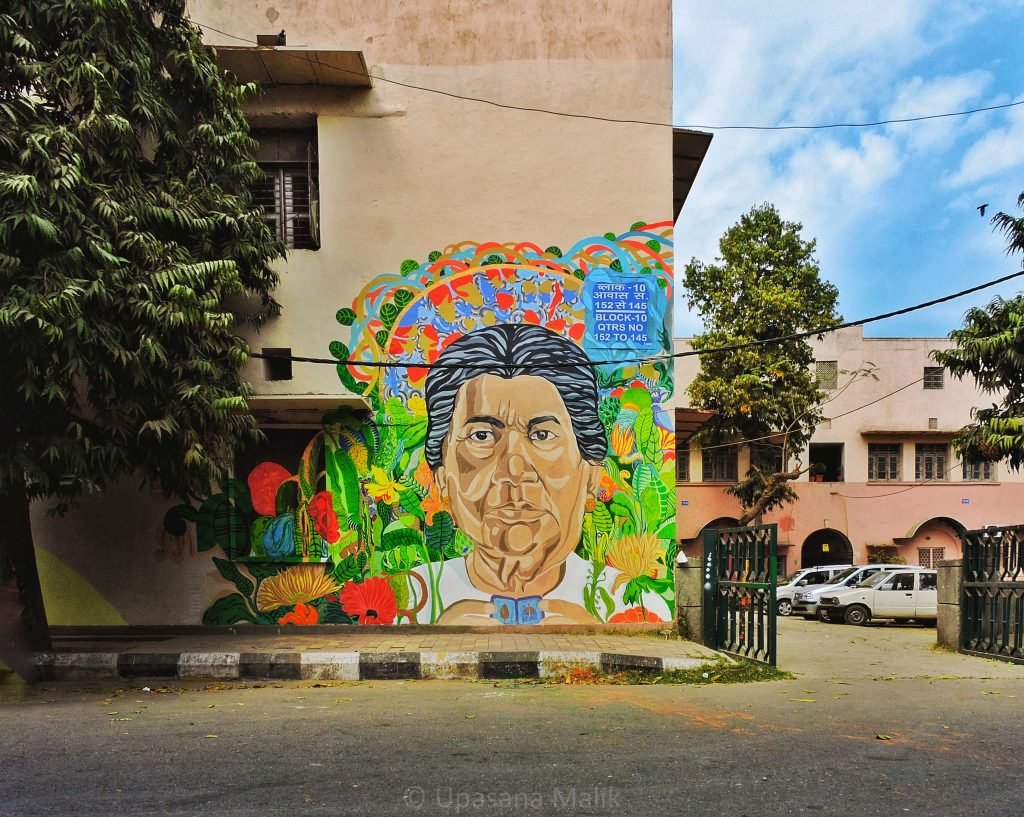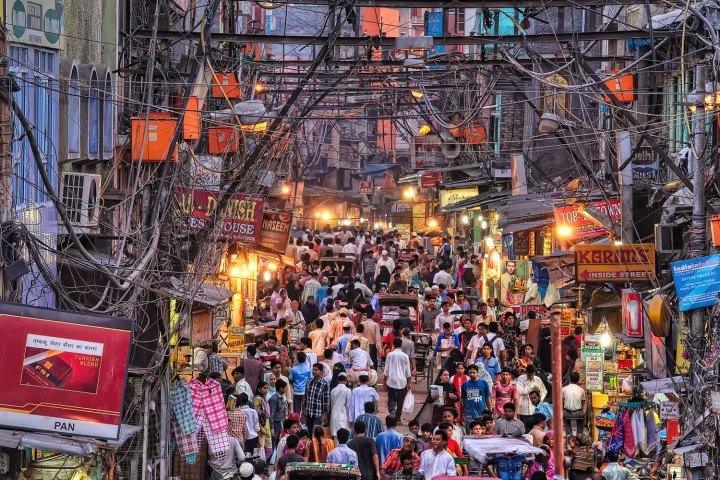Can’t get enough of the street art in Delhi? St+art Delhi 2016 have a lot more colours and perspectives in store. Here’s some more to tantalise your senses and being. Have a look.
1. Fusion Art by Rakesh Kumar Memrot
This particular artwork has been done by Rakesh, who has been exploring the arena of Indian Folk Art for quite a few years. The piece combines his fascination for sparrows & leaves, and Gond Art that is native to Central India. It deals with the serious issue of diminishing options of natural habitat for animals and birds. The elephant in the frame here gives a ray of hope and new beginnings.

2. Shekhawati by Mahendra Pawar
Shekhawati painting is a folk tradition of a small village in Rajasthan that goes with the same name. New technology and print media has somewhat led to the receding importance of such traditional Indian art forms, which led to the conceptualisation of this artwork. Mahendra, who hails from Samode village in Jaipur Tehsil of Rajasthan, has always cherished and kept alive this dying art form through his work. You can find this artwork at Khanna Market in the Lodhi Art District.

3. Swachh Bharat by Kafeel
This piece has been done by Painter Kafeel, a hand-painting and letter artist based in Delhi. The artwork has been facilitated by St+art India in collaboration with Swachh Bharat Mission, Central Public Works Department and Ministry of Urban Development.

4. The Tourist by Avinash and Kamesh
Anyone who will see this mural will instantly be reminded of his/her phone buzzing with social media notifications. That is what the piece aims to depict: the social media and smart phone revolution. While Avinash and Kamesh worked towards their art in Lodhi, they observed many people around clicking pictures of the walls, doing fashion shoots and of course taking a lot of selfies, That’s how the focus of their art changed from the walls towards the people who visit this place daily to view the artwork.

5. Amma by Blaise
This art piece in Lodhi Colony has been done by the Indian artist Blaise Joseph. He has painted here the image of his mother who currently resides in Kerala. Blaise chose the portrait of a mother figure to describe its diverse manifestations. As mother nature, the figure will give you the faint memories of the lost lands, and as a mother in an urban context, it depicts the migrants of the cities – the cities which are one the verge of becoming concrete jungles. This latter category of people are reminded of their own mothers and the mother nature represented in their agricultural lands and forests- the memories that they have left behind. These people are indigenous who have the power to sustain any kind of diversity and culture, despite of being away from their homes.

Image Courtesy: Upasana Malik



